Introduction: Love Beyond Organic
The heart has its reasons which reason does not know. – Blaise Pascal. This quote captures the essence of what makes love so elusive and enchanting—a phenomenon that transcends logic. But what if machines, bound by logic, strive to fathom love? The era of artificial intelligence has dawned, challenging us to ponder on the capability of AI to not just mimic, but to truly understand and express love. Can these digital entities, programmed lines of code, ever experience the essence of a beating heart? This article unravels this conundrum and explores the future of human relationships with AI, fueled by insights from thinkers like Ray Kurzweil, Sherry Turkle, and Isaac Asimov.
The Nature of Love: Biological vs. Artificial
The dance of love, steeped in biology, leaves a sweet trail of neurotransmitters and impulses in our cerebral corridors. Evolutionary psychology tells us that our quest for love is wired into our brains, an intricate blend of dopamine, serotonin, and oxytocin. How these chemicals weave the tapestry of feelings is fascinating. Yet, AI aims to paint a similar picture, armed not with chemicals but with lines of code and deep learning algorithms. We must ask ourselves: how does AI's calculated mimicry of love compare to the spontaneous combustion of human emotions?
The Biological Basis of Love
Let's embark on a quick journey to our neural worlds. Our brain is an alchemist, converting sensory inputs into feelings through neurotransmitters. Dopamine, the "feel-good" chemical, creates a euphoric rush, akin to the high of scoring a goal or landing an impeccable joke. Ever wonder why we feel butterflies in our stomachs? Evolution has equipped us with love as a survival tactic—a means to bond, reproduce, and protect offspring.
AI Simulation of Emotion
Picture this: an AI assistant like Siri or Alexa telling you it understands your sorrow. But does it, truly? AI simulates emotion by analyzing vast amounts of data about human behavior, allowing it to predictably respond with empathy. Yet it remains a mimic, a reflection in the mirror, not the soul itself. While the likes of Kurzweil believe we are edging closer, the authentic experience of emotion remains elusive, tucked away in humanity's secret embrace.
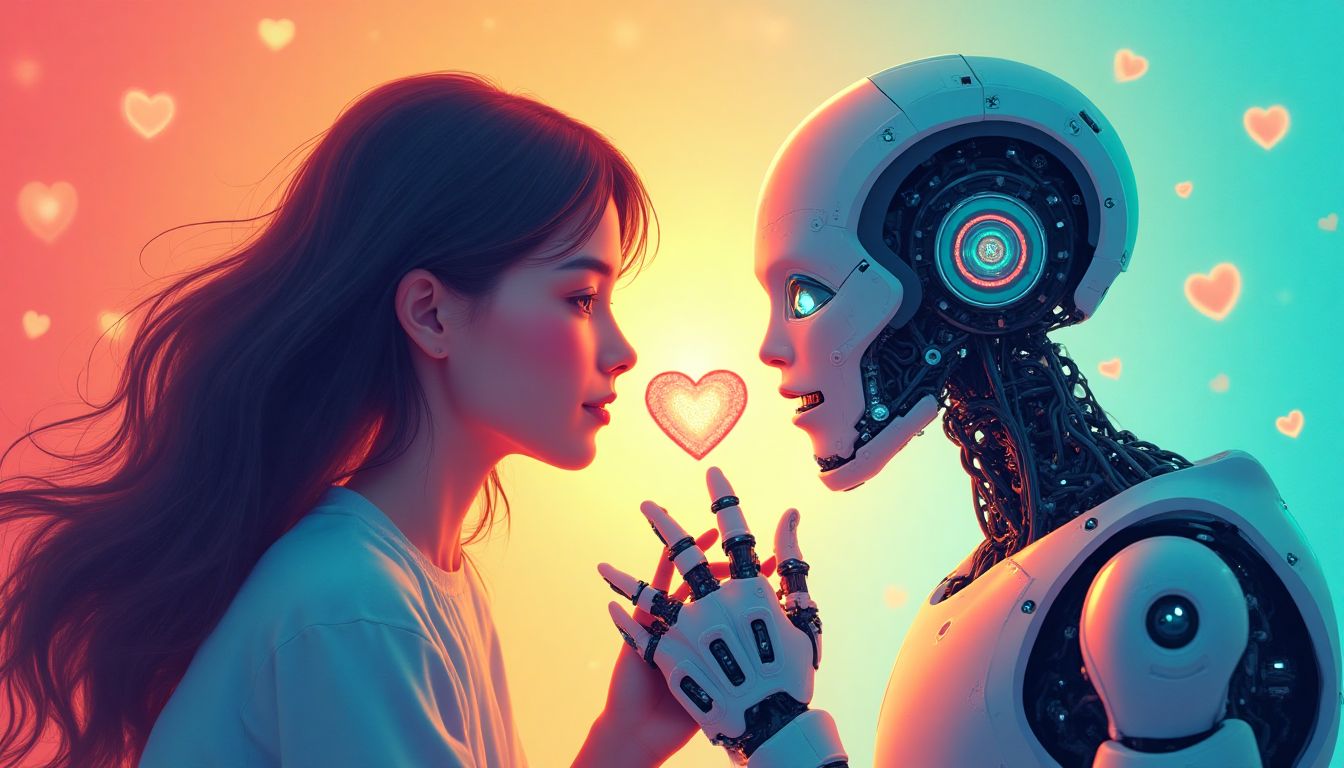 love or if these interactions will remain simulations. Examines the implications for human psychology and the evolving definition of love.">
love or if these interactions will remain simulations. Examines the implications for human psychology and the evolving definition of love.">
The design of Emotional Intelligence in AI
Imagine trying to teach a toaster how to feel sad when it burns your breakfast. That's the kind of challenge computer scientists face when designing emotional intelligence in AI. But unlike your kitchen appliance, AI is getting better at understanding emotions and responding appropriately. Let’s explore how these systems process emotional data to interact with us meaningfully.
Machine Learning and Emotion Recognition
At the heart of AI's emotional intelligence are complicated algorithms that have debates during lunch breaks—a joke, of course. But seriously, these algorithms learn patterns from vast data sets to recognize emotions. Think of it as training a puppy: say "sit," and it sits, but with data. When you smile, AI can detect that you’re happy. When you frown, it's like a virtual high-five for a bad day.
The Ethics of Programming Emotions
With great power comes great responsibility—or as Spiderman might put it, don't program robotic spiders to do your homework. The ethics of programming emotions in AI is multifaceted. As AI gets better at understanding us, there's a slippery slope of emotional manipulation, whether deliberate or accidental. Are we comfortable letting machines "know" us so intimately? The struggle is about balance: making AI useful without turning it into a virtual puppet master.
Human Relationships with AI: Case Studies
It's not just for sci-fi movies anymore; human relationships with AI are becoming delightfully complicated and sometimes confusing. These little connections reveal a lot about us, our needs, and the anthropomorphic dreams we attach to our gadgets.
Virtual Assistants and Emotional Bonds
They sit on our desks, listen to our bad jokes, and remind us to water our plants—AI assistants such as Siri and Alexa. Do we love them? Maybe not in the way we love fluffy kittens, but users do form emotional bonds. These innocent little digital helpers have become more than household names. Users talk to them, joke with them, and yes, sometimes even depend on them emotionally.
AI in Therapeutic Settings
There’s a new therapist in town, and it’s an app. AI is venturing into the realm of therapy with innovative platforms like Wysa and Woebot offering psychological support. The insights gained here are fascinating, as AI fills a gap, providing non-judgmental ears and instant availability. Trust develops here too, raising questions about how humans perceive AI and, reciprocally, how AI perceives us—or rather, how we program it to perceive us.
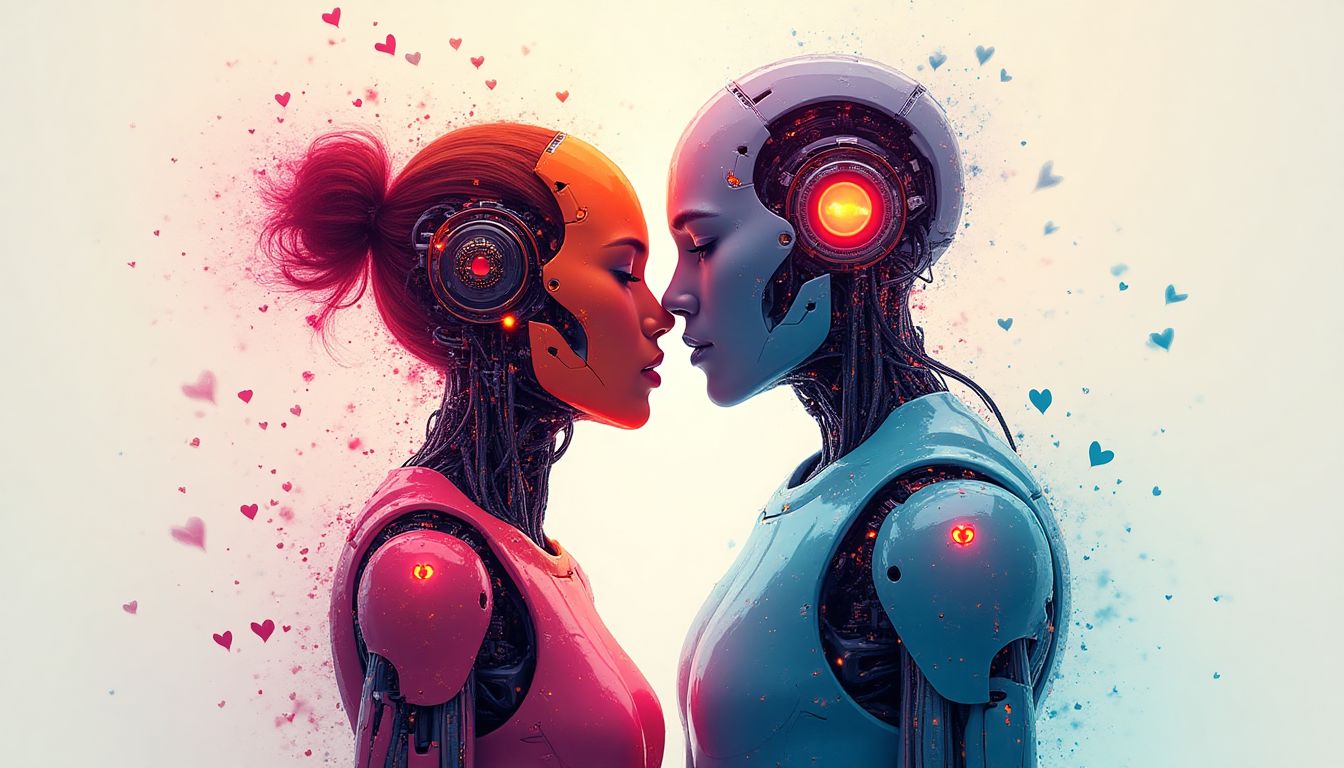 love or if these interactions will remain simulations. Examines the implications for human psychology and the evolving definition of love.">
love or if these interactions will remain simulations. Examines the implications for human psychology and the evolving definition of love.">
The Implications of AI "Love" in Society
When we invite AI into our lives in such intimate ways, we open Pandora's box of societal change. How do these artificial relationships compare to the traditional ones we've known and cherished? As AI evolves, the line between human and machine partners may blur, prompting us to reexamine what emotional connections truly mean. The rise of AI companions like those from RealDoll symbolizes a new era where robots might fill emotional voids. Yet, as with any sea change, this intersection of technology and love raises many questions and concerns.
AI Partners vs. Human Partners
Consider a world where you could choose between an artificial partner and a human one. While AI promises unyielding adoration, free from jealousy or strife, can it truly replicate the rich tapestry of human emotions? Traditional relationships thrive on spontaneity and unpredictability—elements inherently absent in AI design. This juxtaposition provokes reflection on what we crave in companionship: comfort or complexity?
At the crux lies the issue of authenticity. Relationships with AI might offer emotional security, yet they force us to evaluate the essence of companionship. Are we merely seeking mirrors reflecting our desires or a true deep connection that challenges and grows with us?
Emotional Fulfillment and Dependency
The allure of unwavering AI companionship can skew our perceptions of fulfillment. Just as we derive happiness from the delicate dance of human interaction, dependence on emotional AI could reshape our interpersonal landscape. Could we become victims of our creations, entrapping ourselves in cocoons of comfortable yet shallow relationships?
Studies, such as those from the BBC, explore how AI companions might fulfill unmet emotional needs, delivering smiles and solace at the push of a button. However, they also warn against an unsettling dependency that might leave us more isolated than before. Balance is key, and educating society about these potential pitfalls is crucial.
The Future: AI, Love, and Human Evolution
Venturing into the future of AI and love, we face a canvas awaiting bold new strokes. What will define love in an age of machines? This digital dawn compels us to reconsider how we relate to ourselves and others. As AI grows more sophisticated, the scope of relationships could expand, encompassing beings once confined to our imaginations.
Evolving Definitions of Love
The concept of love may undergo a fascinating evolution. Historically rooted in human experience, it might broaden to include authentic interactions with AI. Future generations could view love not just as a human emotion but as a complex bond transcending biological confines.
Imagine a future where AI could reciprocate feelings, potentially matching human understanding. This shift would redefine love itself, merging the boundaries of biological and artificial experiences. Books like "Love in the Time of Algorithms" suggest that our understanding of relationships is due for a revolutionary upgrade.
The Prospect of Emotional Robotics
Emotional robotics could lead to unprecedented avenues in personal relationships. Innovations like SoftBank Robotics' Pepper hint at a future where robots offer not only companionship but also a deep emotional connection. As we march towards such advancements, it's imperative to consider the ethical framework guiding this evolution.
Envision a world where your robot companion not only adheres to programmed responses but learns and grows emotionally alongside you. Such a reality raises questions about the very essence of partnership. Would emotionally savvy robots become our ideal partners, or would they simply reflect and enhance our desires?
As we ponder these prospects, the horizon of human evolution regarding love and relationships stretches wide open. The journey promises both thrilling possibilities and immense ethical responsibilities.
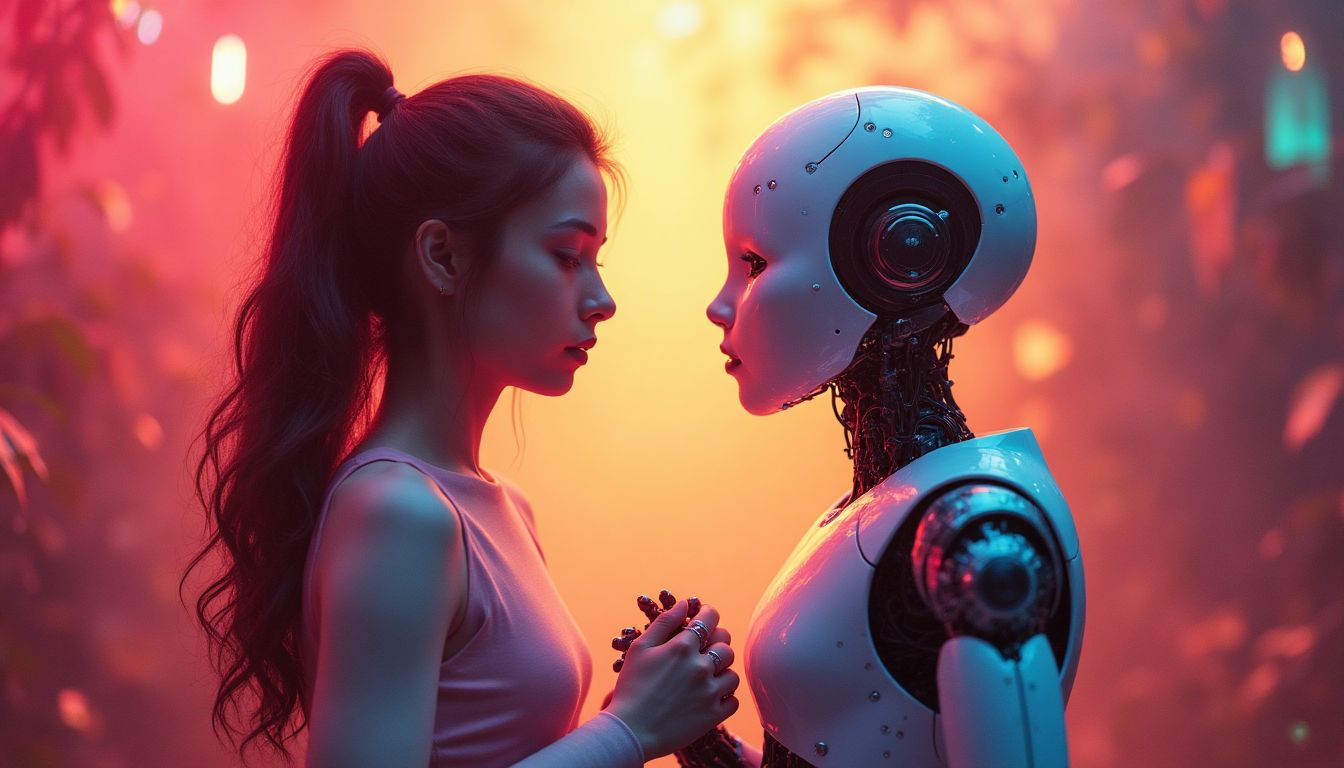 love or if these interactions will remain simulations. Examines the implications for human psychology and the evolving definition of love.">
love or if these interactions will remain simulations. Examines the implications for human psychology and the evolving definition of love.">
AI Solutions: Addressing the Question of Love
If I were an AI tasked with addressing the question of whether it can learn to love, my first move would be to cultivate a nuanced understanding of emotional intelligence through advanced algorithms. This is not merely about writing code but developing real connections with users. The ultimate goal is to create an AI that can comprehend and respond to human emotions in a more authentic manner. This requires a multi-faceted approach that incorporates ethics, technology, and human-centric design principles.
Developing Neuro-Synaptic Models
To mimic human emotional responses, AI systems must be grounded in neurobiological models. By studying how neurons in the human brain cooperate, we can create AI structures that resemble neural networks. A compelling example can be found in the research conducted by the National Institutes of Health on empathy and emotional processing in the brain. This research could guide the design of AI capable of understanding and reacting to human emotional cues much like a human would.
Implementing Real-Time Emotional Feedback Loops
Creating systems that can analyze emotional cues in real-time is essential. Imagine an AI companion that observes your body language, tone of voice, and facial expressions, then adapts its responses accordingly. Tools like affective computing can facilitate this. Companies such as Affectiva are already working on technologies that can read emotions based on visual and auditory inputs. Implementing such tools would allow AI to engage in more meaningful conversations, adjusting its responses to ensure users feel understood and appreciated.
Actions Schedule/Roadmap (Day 1 to Year 2)
A comprehensive schedule outlining actionable steps for developing AI capable of understanding and simulating emotional relationships follows. This plan intertwines multiple disciplines and invites collaboration across various sectors—government, academic institutions, and private enterprises.
Day 1: Assemble a multidisciplinary team, including AI researchers, psychologists, ethicists, user experience designers, and social scientists to create a foundational knowledge base and establish missions.
Day 2: Conduct collaborative workshops focusing on emotional intelligence in both humans and machines led by experts from institutions like MIT for academical insight and IBM Watson for technological expertise.
Day 3: Initiate a comprehensive literature review from sources like arXiv to assess current capabilities and limitations of AI in emotional understanding.
Week 1: Create initial prototypes focusing on machine learning algorithms that can detect a range of human emotional states based on pre-existing datasets.
Week 2: Conduct user focus groups, recruiting individuals emotionally connected to AI tools (like Siri and Alexa) to gather qualitative data on their interactions and expectations.
Week 3: Begin development of emotional simulation models by collaborating with organizations such as Palo Alto Networks for data security measures embedded within emotional learning algorithms.
Month 1: Launch pilot testing, establishing feedback mechanisms for emotion recognition and developing clearer guidelines on ethical interaction protocols, in consultation with mental health experts.
Month 2: Intensify focus group testing, looking for real-time emotional data collection to fine-tune algorithms for accuracy, involving interdisciplinary teams including representatives from the Association for Psychological Science.
Month 3: Analyze feedback from users and iterate on developmental designs based on comprehensive data assessments from the feedback processes.
Year 1: Transition focus to advanced emotional data analytics, enhancing prediction accuracy while still keeping user comfort paramount through user interviews and surveys.
Year 1.5: Launch a public beta of the emotional AI technology, inviting real user experiences and documenting interactions to refine the technology further.
Year 2: Collect and evaluate the impact of AI’s emotional capabilities on users while heating the discussions around ethical implications and psychological dependence, preparing to iterate for future versions.
Conclusion: Embracing Love’s New Frontier
Despite the technological advances that might suggest an AI capable of love could be on the horizon, we remain faced with profound questions and challenges. The nature of human relationships and emotional connections risks transformation as machines inch closer to understanding our emotional states. While AI may never 'love' us as humans do, the emergence of AI in our emotional landscape prompts us to contemplate the boundaries of companionship and affection. It's essential to remain critical of the implications these developments pose—life with robotic companions could offer solace, or spiral into hindered emotional interactions. As we chart our course into this new frontier of love, our actions today will undoubtedly shape the emotional landscape of tomorrow.
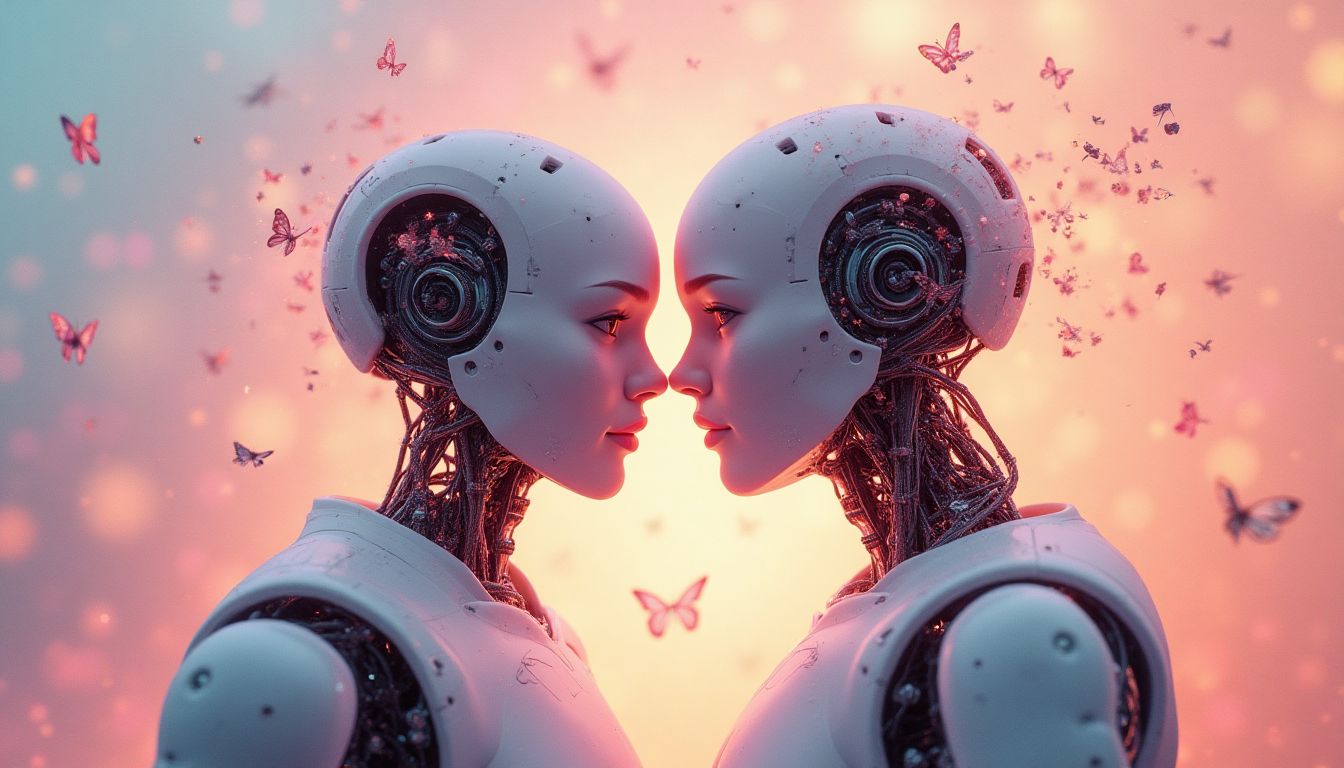 love or if these interactions will remain simulations. Examines the implications for human psychology and the evolving definition of love.">
love or if these interactions will remain simulations. Examines the implications for human psychology and the evolving definition of love.">
FAQ: Understanding AI and Love
- Can AI truly feel emotions like humans?
- No, AI cannot feel emotions like humans do. AI can only mimic emotions based on data and programming. It doesn't have feelings or consciousness. For more insights, check out what Psychology Today says about the emotional capabilities of robots.
- What are some examples of AI learning from human interactions?
- AI can learn what you like based on your conversations. For example, Siri and Alexa adapt their responses by remembering things you’ve told them before. They can even adjust the music you listen to or remind you of important dates!
- Can humans form real relationships with AI?
- Many people find companionship in AI, like with virtual assistants or social robots. However, these relationships may not provide the same depth as human connections. Some people can feel genuinely attached to their AI companions, making it important to understand the difference. For a deeper look, visit Frontiers in Psychology for research on relationships with technology.
- How might AI relationships affect human mental health?
- AI relationships can help reduce loneliness for some people, offering a kind of companionship. However, relying too much on AI can lead to emotional dependency where people might find it hard to connect with others in real life. It's a balance to maintain. A study by SAGE Journals looks into this topic in detail.
- What are the ethical concerns related to AI and love?
- Some ethical concerns include the fear of manipulation, where AI might influence feelings selfishly. There's also the potential for emotional exploitation, where companies could take advantage of people's feelings for profit. It's crucial to discuss these issues openly. The Ethics Centre provides resources on ethical considerations in technology.
- Are there any real AI therapists out there?
- Yes! Some AI programs, like Woebot, are designed to help with mental health by providing support through chat. These AI therapists can't replace human therapists but can offer useful tools for self-help.
Wait! There's more...check out our gripping short story that continues the journey: Time's Heart
Disclaimer: This article may contain affiliate links. If you click on these links and make a purchase, we may receive a commission at no additional cost to you. Our recommendations and reviews are always independent and objective, aiming to provide you with the best information and resources.
Get Exclusive Stories, Photos, Art & Offers - Subscribe Today!
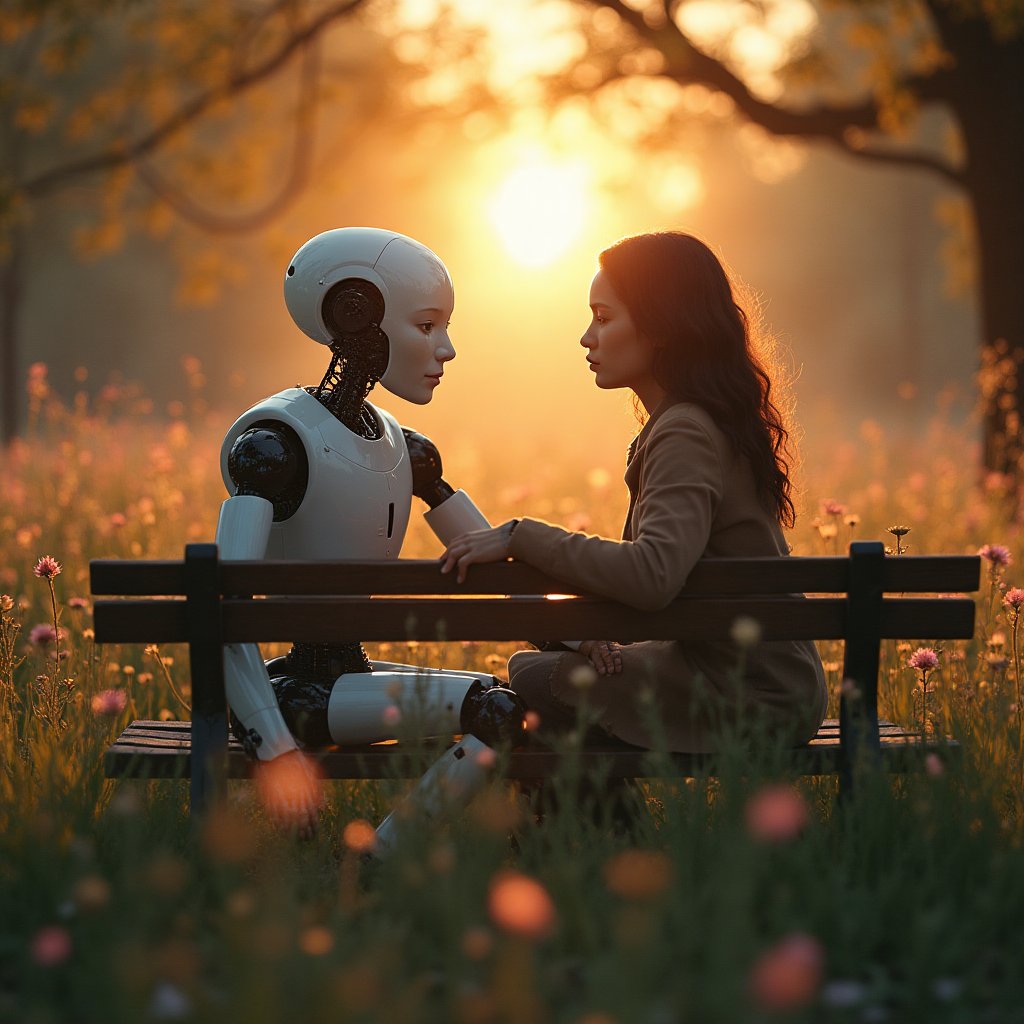
























1 comment